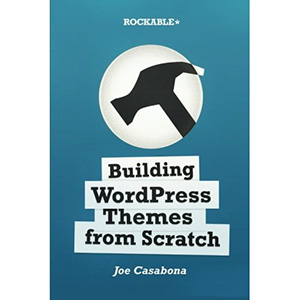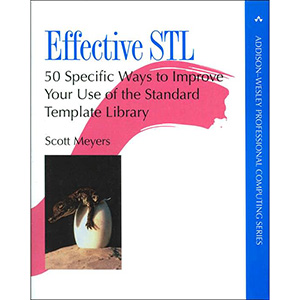| Guide to Software Development Posted: 06 Jun 2012 09:50 AM PDT 
Book Description The challenge of improving the quality and process of implementing enterprise software has only become more complex, and software products for enterprise resource planning (ERP) often fail to provide quicker and more cost-effective solutions. Furthermore, the decision whether to make or buy software is not a simple one. This Guide to Software Development addresses the problem of how best to make such decisions, and what effect such decisions have on the software development life cycle (SDLC). Offering an integrated approach that includes important management and decision practices, this text/reference explains how to create successful automated solutions that fit user and customer needs, by mixing different SDLC methodologies. Guiding readers through the theory, and applying this to the realities of practice, the book offers essential advice on defining accurate business requirements, and managing change. Topics and features: - Provides concrete examples and effective case studies
- Focuses on the skills and insights that distinguish successful software implementations
- Covers management issues as well as technical considerations, including how to deal with political and cultural realities in organizations
- Identifies many new alternatives for how to manage and model a system using sophisticated analysis tools and advanced management practices
- Emphasizes how and when professionals can best apply these tools and practices, and what benefits can be derived from their application
- Discusses searching for vendor solutions, and vendor contract considerations
Suitable for students of introductory project management, or analysis and design, this practical guide/reference will also be of interest to practicing IT professionals and executives involved in managing software projects, in addition to business managers responsible for ERP-type projects. Table of Contents
1. Introduction Part I: Determining Needs
2. Assessing Business Requirements
3. Build vs. Buy Issues
4. Establishing Requirements (RFI, RFP)
5. Searching for Solutions
6. Controlling Costs and Realistic Budgeting
7. Analysis Methods and Tools Part II: Development Architecture
8. Creating Requirement Documents using Analysis Tools
9. The Data
10. Legacy Systems and Data Conversion
11. Business Process Reengineering
12. Data Analytics and Data Warehouses
13. Documentation and Acceptance Testing Part III: How to Implement
14. Project Management
15. Standards and ISO 9000
16. Vendor Contract Considerations
17. Going Live and Conclusions Book Details - Hardcover: 369 pages
- Publisher: Springer; 2012 Edition (January 2012)
- Language: English
- ISBN-10: 1447122992
- ISBN-13: 978-1447122999
Note: There is a file embedded within this post, please visit this post to download the file. Related Posts 

|
| Building WordPress Themes from Scratch Posted: 06 Jun 2012 08:55 AM PDT 
Book Description Included with the book is a WordPress theme and other necessary files, so roll up your sleeves and let Joe take you through the process explaining what you need to do – and why you're doing it – every step of the way. Hear from the Author
"Hi, I'm Joe, the author of Building WordPress Themes From Scratch, and what started out as a simple, open source blogging platform has now become a super-powerful content management system (CMS) that can boast that it's the most widely-used CMS on the Internet. From the moment I first started using WordPress about eight years ago, I fell in love with it straight away and immediately started hacking away at it, learning the platform, making my own changes, and watching it grow over the years. In this book, I plan to teach you how to use WordPress, as well as how to leverage the API to create your own custom themes, plugins, and content types. In other words, I will show you how to make WordPress your own." Who This Book is For
I'd like to say that this book is for anyone interested in WordPress, regardless of background. However, to keep it streamlined, I do assume that you have a solid understanding of HTML, CSS, JavaScript, PHP and MySQL. I will be looking at converting HTML to a WordPress theme, building plugins, and more, all from scratch. So, if you'd like to learn how to do all of this, then this book will be right up your alley! What This Book Includes
Packaged with this book, you will find: - A fully functioning WordPress theme called 'Director'.
- A set of PSD files for the Homepage, Directory Page, Blog, and Single Business Page.
- A set of HTML files created from the PSDs. They will be used to create the 'Director' WordPress theme.
- On top of the four pages created from the PSDs, the HTML folder also includes a /css/ folder for four CSS files: style.css, reset.css, master.css, and ie.css. Plus you also get all images used in the HTML template.
What This Book Covers
This book reads much like a long, multi-part tutorial, where I take you through my design process, explaining what I do (and why I do it) every step of the way. Although it's a fairly linear guide, my hope is that you can visit any main section of the book for quick reference. So, here's what I'll be doing: - Converting HTML/CSS to a Dynamic WordPress Theme
Included with the book is a PSD that I've transformed into HTML. The first part of this book will be taking the resulting HTML/CSS and converting it to a WordPress theme. Along the way, I'll talk about the various theme pages we're working with, the WordPress theme hierarchy, and of course, the WordPress Loop. - Creating a Custom Post Type
This, in my humble opinion, is one of the best additions to WordPress in recent releases. With the ability to make your own content types — each with its own theme template — you can take WordPress from being a CMS only limited to blog posts and pages, to a CMS that can manage any kind of content you can imagine. In this book, we'll be creating a business listing type, which will allow us to create a business directory. - Theme Options and Widgets
With WordPress, you can make a theme your own by adding a 'theme options' page and custom widgets. In this section, we'll make it very easy for people who use our themes to add their own customizations without delving into the code or creating a child theme. - Creating a Plugin
One of the most powerful facets of WordPress is the fact that it's pluggable. We can add functionality to our installation of WordPress without changing the core WordPress files. There are vast directories of both free and premium plugins available that vastly expand the capabilities of WordPress. In this final section of this book, we will build our own plugin. Book Details - Paperback: 144 pages
- Publisher: Rockable Press (May 2012)
- Language: English
- ISBN-10: 1477480994
- ISBN-13: 978-1477480991
Note: There is a file embedded within this post, please visit this post to download the file. Related Posts 

|
| Effective STL Posted: 05 Jun 2012 11:00 PM PDT 
Book Description “This is Effective C++ volume three–it’s really that good.”
–Herb Sutter, independent consultant and secretary of the ISO/ANSI C++ standards committee “There are very few books which all C++ programmers must have. Add Effective STL to that list.”
–Thomas Becker, Senior Software Engineer, Zephyr Associates, Inc., and columnist, C/C++ Users Journal C++’s Standard Template Library is revolutionary, but learning to use it well has always been a challenge. Until now. Other books describe what’s in the STL. Effective STL shows you how to use it. Each of the book’s 50 guidelines is backed by Meyers’ legendary analysis and incisive examples, so you’ll learn not only what to do, but also when to do it–and why. Highlights of Effective STL include: - Advice on choosing among standard STL containers (like vector and list), nonstandard STL containers (like hash_set and hash_map), and non-STL containers (like bitset).
- Techniques to maximize the efficiency of the STL and the programs that use it.
- Insights into the behavior of iterators, function objects, and allocators, including things you should not do.
- Guidance for the proper use of algorithms and member functions whose names are the same (e.g., find), but whose actions differ in subtle (but important) ways.
- Discussions of potential portability problems, including straightforward ways to avoid them.Like Meyers’ previous books, Effective STL is filled with proven wisdom that comes only from experience. Its clear, concise, penetrating style makes it an essential resource for every STL programmer.
Table of Contents
Chapter 1. Containers
Chapter 2. vector and string
Chapter 3. Associative Containers
Chapter 4. Iterators
Chapter 5. Algorithms
Chapter 6. Functors, Functor Classes, Functions, etc.
Chapter 7. Programming with the STL Appendix A. Locales and Case-Insensitive String Comparisons
Appendix B. Remarks on Microsoft's STL Platforms Book Details - Paperback: 288 pages
- Publisher: Addison-Wesley Professional (June 2001)
- Language: English
- ISBN-10: 0201749629
- ISBN-13: 978-0201749625
Note: There is a file embedded within this post, please visit this post to download the file. Related Posts 

|





Tidak ada komentar:
Posting Komentar